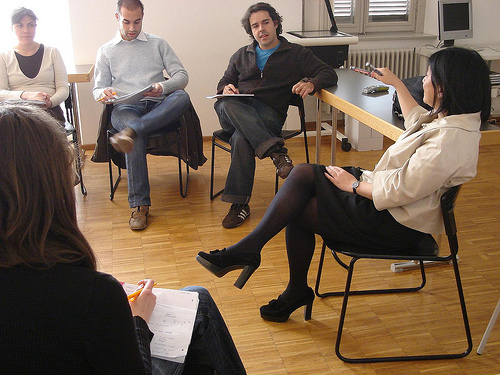Today’s guest post is from Emily D’Alimonte, a full-time Social Work and Women’s Studies major at the University of Windsor. Emily has facilitated both online and face-to-face discussions.
Emily will be co-facilitating a workshop with Christine Rossi next week, February 7, 2012 at 10 am. For more information or to register for “Dynamic Discussions,” please visit the CTL registration page: http://cleo.uwindsor.ca/workshops/ctl/52/.
The first time I had the opportunity to facilitate a discussion occurred within the summer semester of 2011. I had been appointed a Teaching Assistant position for Gal Pals, an immensely popular Women’s Studies course, and I was excited for the new role I was about to take on. I soon found myself in charge of facilitating a fair amount of students within online discussion group forums. Although I was a bit tentative about facilitation, I was astounded by the amount of participation I received from the students! Everyone appeared to be comfortable with the discussion process, and my role as a facilitator was typically rather easy.
 In the fall of 2011, I was appointed the same Teaching Assistant position for Gal Pals, but this section would be taught in class. Once again, I was asked to facilitate discussion groups. Based on my previous experience, I had expected students to be extremely comfortable with the discussion process and I was prepared for ample participation. Therefore, you can imagine how mortified I was as I stood in front of a classroom full of nothing but silence, and blank faces staring back at me. It seemed as though students were not nearly as comfortable with participation as I had once thought! I quickly realized that students were far more likely to participate behind the safety of a computer screen rather than in front of their peers within a classroom. This is why learning tips and tricks about how to facilitate a meaningful discussion (whether in-class or online) is very important for instructors at any level of teaching. Not only will it enable students to have the opportunity to learn within a different type of environment, but it will also aid in the prevention of experiences such as the one I have described above – which is something I feel most instructors would rather avoid!
In the fall of 2011, I was appointed the same Teaching Assistant position for Gal Pals, but this section would be taught in class. Once again, I was asked to facilitate discussion groups. Based on my previous experience, I had expected students to be extremely comfortable with the discussion process and I was prepared for ample participation. Therefore, you can imagine how mortified I was as I stood in front of a classroom full of nothing but silence, and blank faces staring back at me. It seemed as though students were not nearly as comfortable with participation as I had once thought! I quickly realized that students were far more likely to participate behind the safety of a computer screen rather than in front of their peers within a classroom. This is why learning tips and tricks about how to facilitate a meaningful discussion (whether in-class or online) is very important for instructors at any level of teaching. Not only will it enable students to have the opportunity to learn within a different type of environment, but it will also aid in the prevention of experiences such as the one I have described above – which is something I feel most instructors would rather avoid!
(Image: “Susan leads group discussion, a Creative Commons Attribution – Non-commercial image from smannion’s photostream.)


